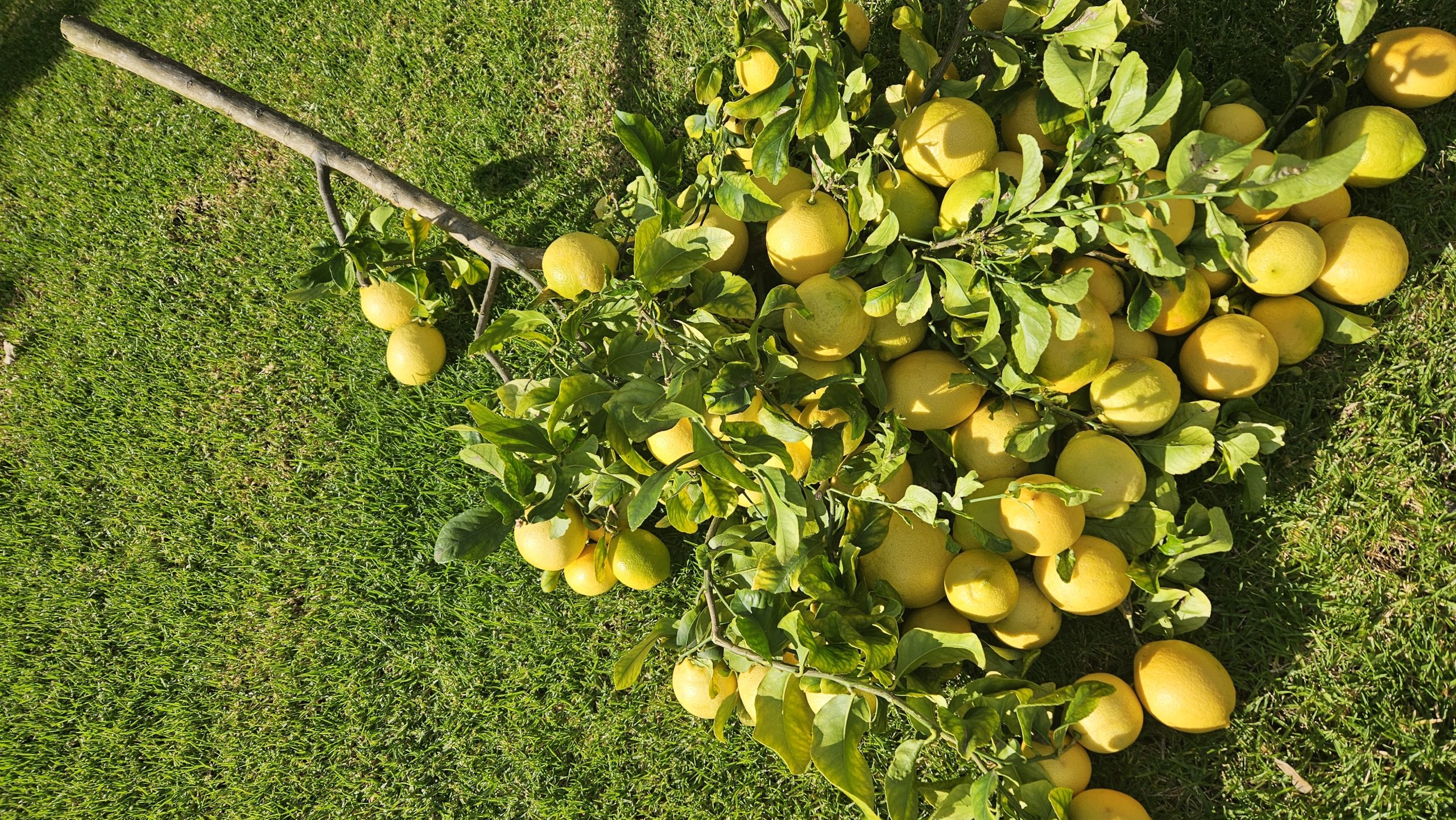Early work reaps rewards as spring approaches | In Your Patch

Wait until your harvest is ripe before removing diseased wood and foliage. Far too much for my family to consume, this bounty was donated to the Margaret River Community Pantry.
Although the weather may conspire against you to be outdoors, there’s still plenty to keep you busy.
I recently emptied my worm farm castings into the garden, mainly around the base of my fruit trees. I also added bagged manure to the rest of the garden, waiting until after heavy rains so as not to lose half of it to leaching.
I noticed my lemon tree had some great new growth but unfortunately a lot was covered in citrus leaf minor – identified by curling leaves and long silver marks on new growth. This is a tricky one to get rid of. While a healthy tree fights pests and diseases, sometimes it doesn’t matter what you do – your trees will still exhibit signs of invasion.
What to do? I cut off diseased parts of the tree and binned them, fed it with manure at the base and applied a foliar spray for more immediate effect. I recently pruned half a dozen fruit trees at a property in Margaret River with the South Regional Tafe Margaret River Certificate II Horticulture students.
While pruning may seem daunting at first, there are some simple rules of thumb that will tend to see you through. Assess the entire tree at a distance.
Note any diseased or dead wood and remove. Note any crossing branches and remove. Thin the centre of the tree to encourage light and air into the crown. Remove any branches that are touching the ground. Remove any suckers below the base of the tree trunk, below a graft line, or surrounding the trunk shooting up from the ground. Use the three-cut method for larger branches (look it up) to avoid damaging your tree.
Finally, know your tree. Stone fruit, for example, fruit on new growth so a heavy prune will not drastically alter fruit production. They prefer a light prune after fruiting in summer and a more decent prune when dormant, but don’t leave it too late or you’ll be cutting off buds and therefore your flowers and fruit.
Apples and pears however, tend to fruit on older wood, so a heavy prune may cut off the very wood that you need for fruit production. They prefer a lighter prune in late winter.
Citrus are so hardy you can prune them pretty much any time of the year. Know the needs of your specific variety as there can still be individual differences in species. Constantly stand back and assess the overall shape of the tree to ensure you prune to your desired shape, especially if you’re netting. Feed, mulch, remove any fruit from the ground, and be sure to dispose of waste appropriately.
What to plant? Asparagus, beetroot, broad beans, peas, cabbage, carrot, caulies, celery, rhubarb crowns and silver beet can all go in. If you planted early as I did you’ll possibly fit in two crops of winter veg.
Continue to watch for cabbage moth eggs and caterpillars and spray with Dipel as required.
We’ve already had large harvests from the MRPS garden of cabbage, kale, celery, and coriander. And of course it’s citrus time – oranges, mandarins, lemons, and limes are in plentiful supply.
We’ve passed the winter solstice – hooray! So can now look forward to daylight hours slowly creeping up. All plants and animals respond to increasing daylight so although it’s cold, it’s a good time to take cuttings and propagate, although the warmth of spring will also help that process along.
Enjoy the lower temperatures and of course the much-needed rain.
Terri Sharpe is Coordinator and Garden Specialist of the Margaret River PS Kitchen Garden Program and a Horticultural lecturer at South Regional TAFE.















